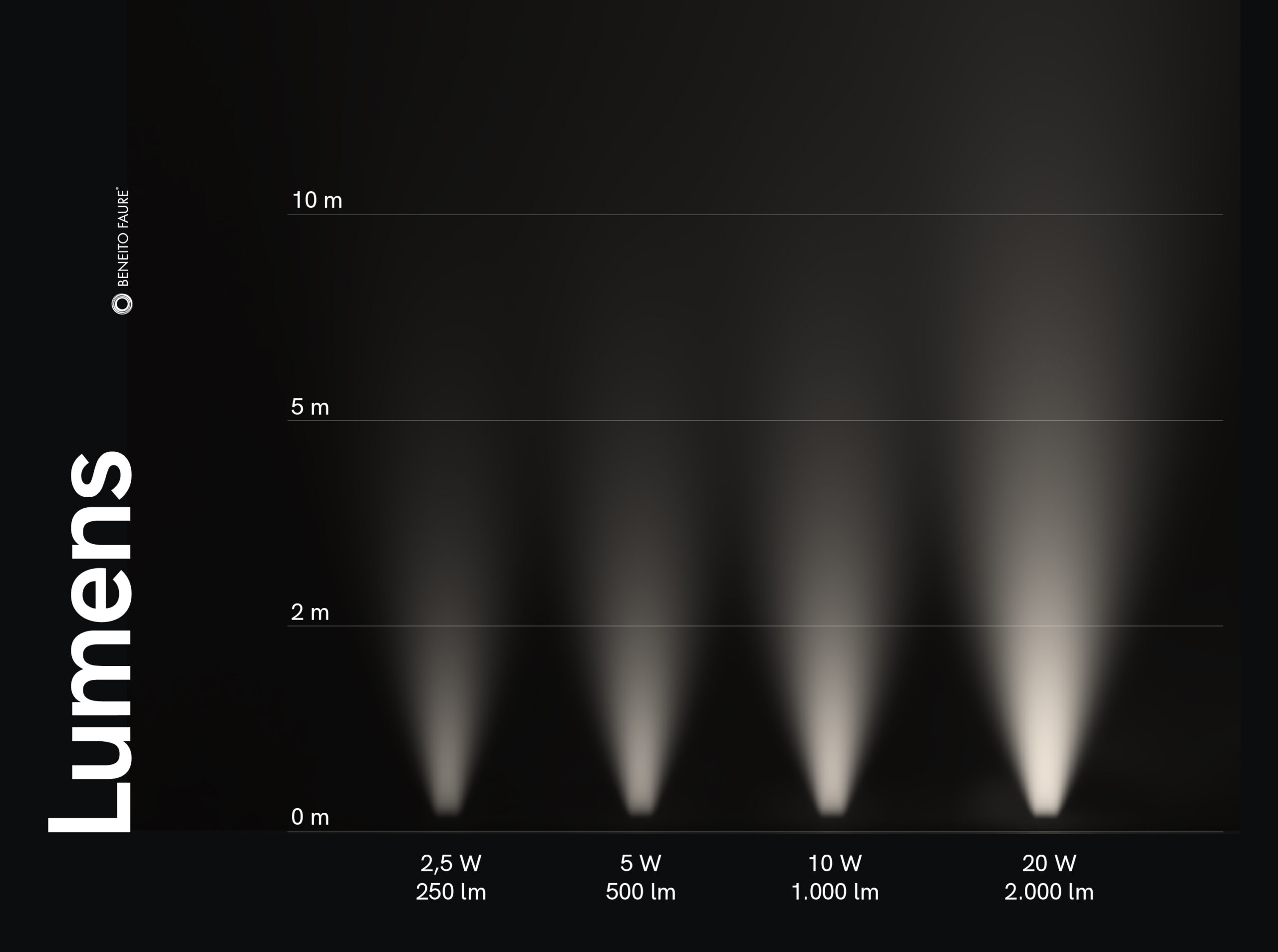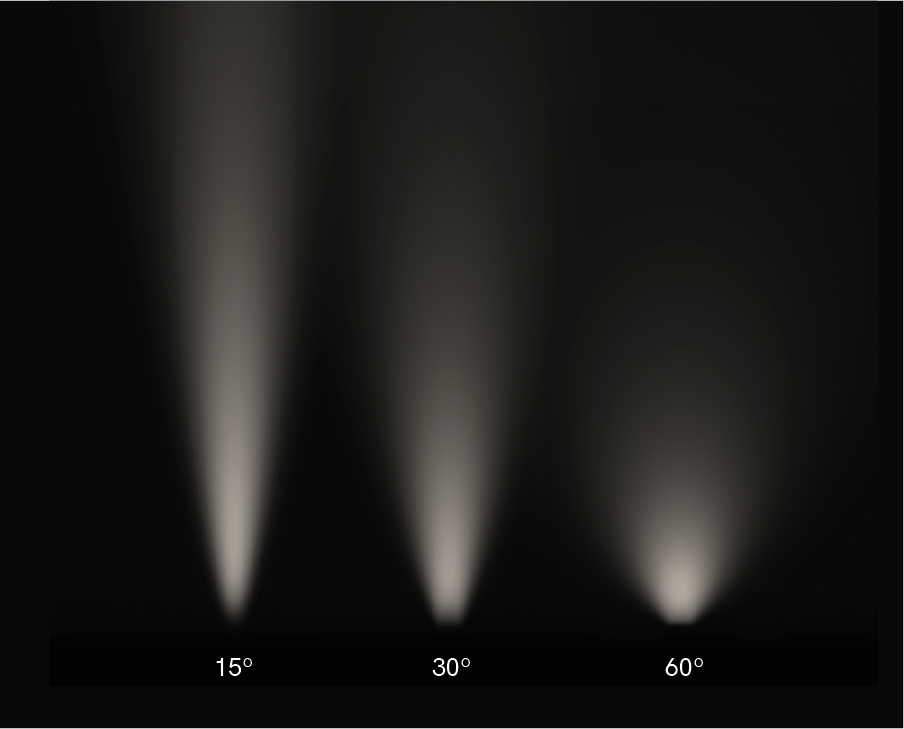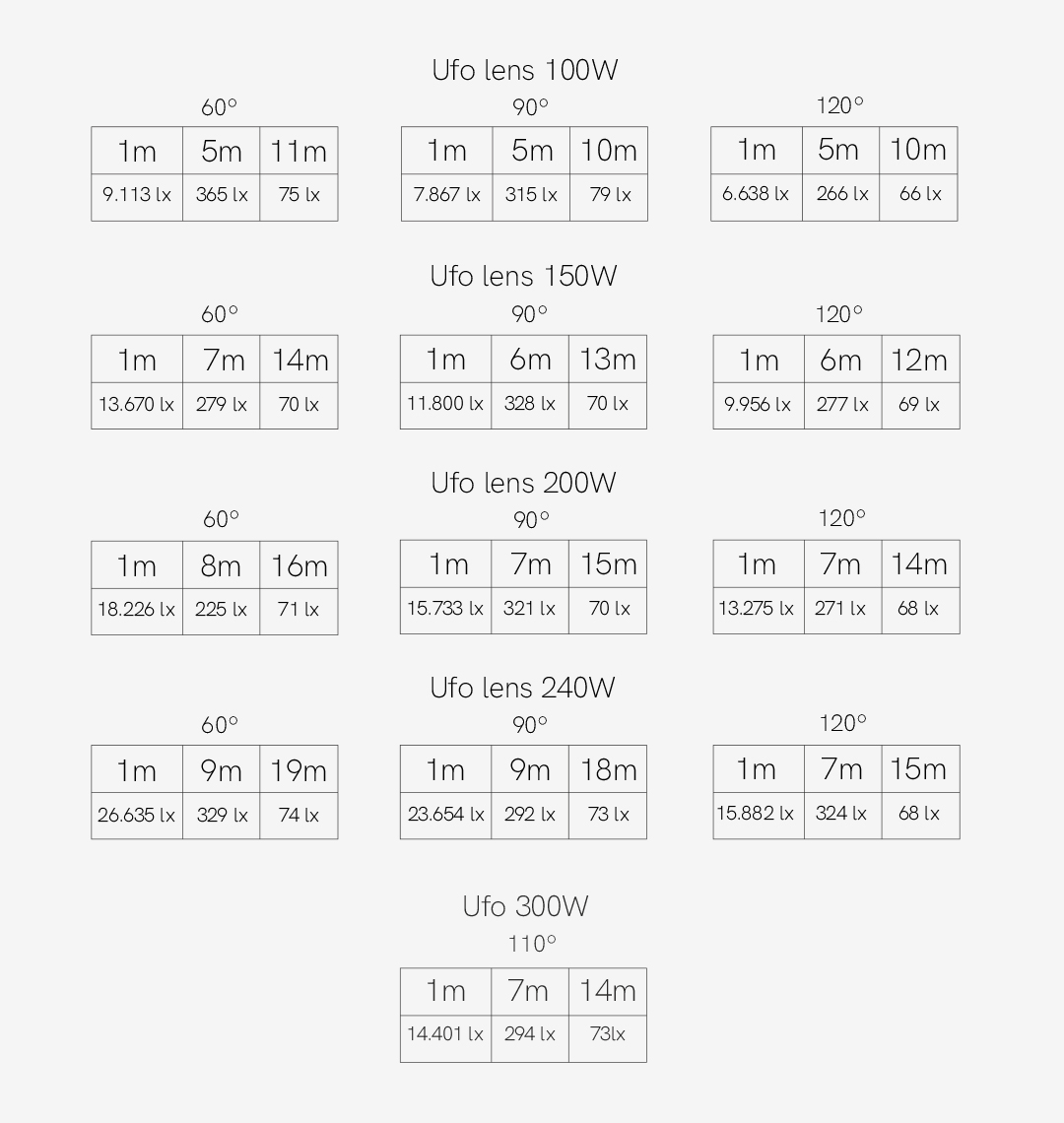What are luminous flux and luminous intensity?
In order to select the most suitable luminaires for the environment in which they will be installed, we have to consider the two variables which characterize the LED: the luminous flux and the luminous intensity.
On the one hand, luminous flux is known as the perception of the light output generated by a light beam in a space, being the amount of energy that emerges from the light source converted into visible radiation. It is understood as the amount of light and luminosity, expressed in Lumens (lm), that a light source irradiates in a second.
However, there is a close relation between Lumens and Watts (W), so we may sometimes find the value expressed in Lumens per watt (lm/W). It is important to remember that the ratio between Lumens and Watts is positive. The more Watts per item, the more Lumens has to produce the light source in order to achieve its maximum capacity. It is worth bearing in mind that Watts are nothing more than the amount of energy consumed by the LED in one hour, so the symbol (lm/W) will show the luminous efficiency according to the consumption of the LED.

A fact to keep in mind is that the luminous flux of a LED is extended until the LED’s lifespan. In other words, the intensity of the luminous flux remains the same throughout its lifetime. Likewise, the lumen is a figure that warns us of the lighting capacity that the LED can provide, which facilitates the decision of the location. The amount of light that a space needs will always depend on what we want to illuminate, the intensity with which we want to do it and the location of the light point, essential issues to maximize the performance of any luminaire. In this case, the lux value (lx) measures the amount of light or luminous flux that falls on a surface. This value varies according to how far we illuminate the surface: the object closest to the spot will get more light than those further away.
On the other hand, we speak of luminous intensity to make reference to the power of the light evoked toward a certain direction, in precise levels. Luminous intensity is expressed in candelas (cd) and represents the relation between lumens and angle of light. This value is helpful because we don’t usually design projects where the same light is beamed in all directions, we select one product or another to direct the light towards one point to create a lighting effect and the desired atmosphere.

In this way, the light intensity will vary depending on the light beam of the luminaire. A more focused light beam provides higher intensity and is ideal to highlight points of interest in a space. While a wider beam of light will be ideal for general lighting. For these reasons, the greater the distance between the spotlight and the space to be illuminated, the more Lumens the luminaire should have.
Below is an example with our industrial hoods Ufo Lens, with 100W, 150W, 200W and 300W of power. It is illustrated how all the above values are linked together. We see how the amount of light that reaches the surface (lx) changes depending on the power of the luminaire (W), the distance from which the light is emitted (m) and also the light beam (60º, 90º, 110º and 120º):

In short, one way to understand how light affects the final result is through a study that parameterizes the effects and distribution of light rays in a space. The radiated light is not uniform and does not have the same strength in all corners. Beneito Faure creates these light studies using specialized software to generate lighting calculations and three-dimensional images. In this way, the costumer can foresee how his project will turn out before over-lighting it and generating unnecessary expenses.